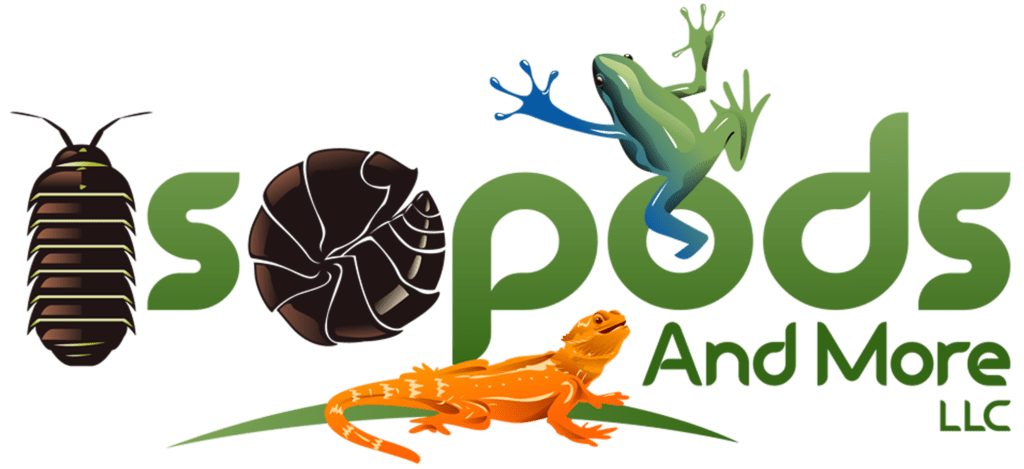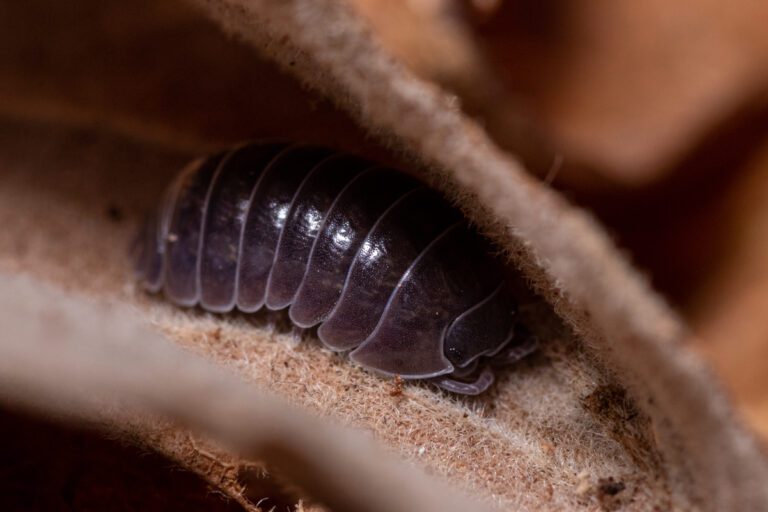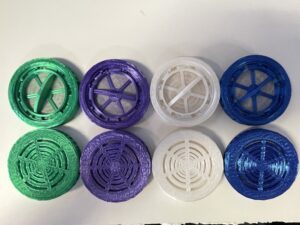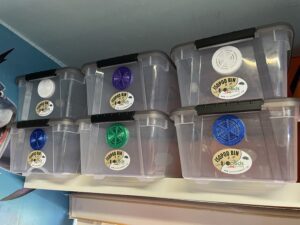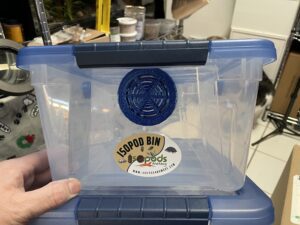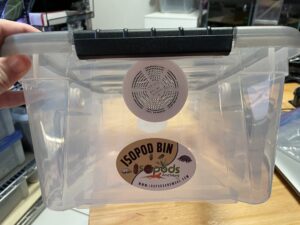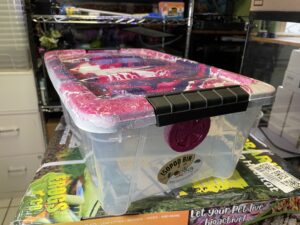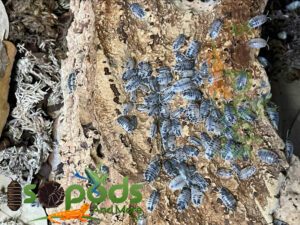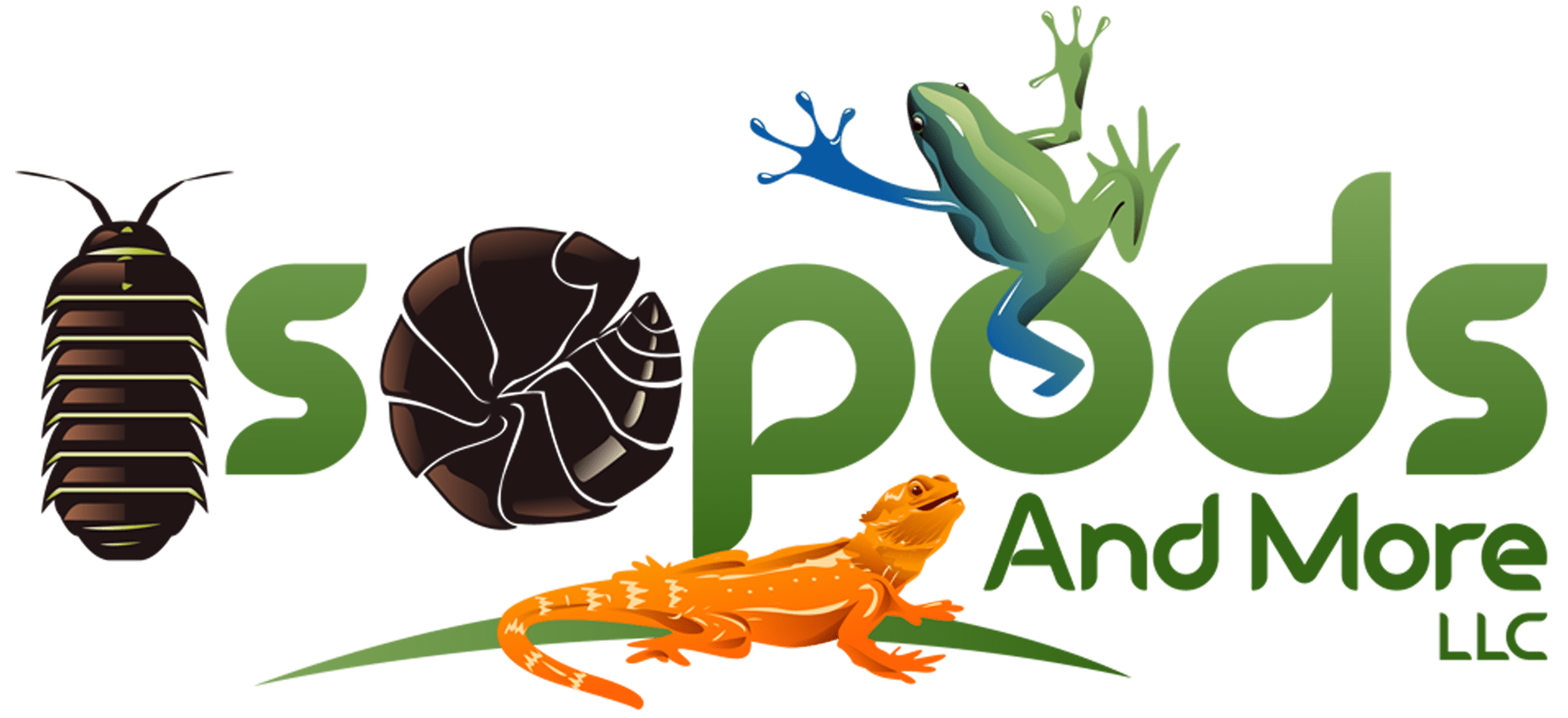In the fascinating world of bioactive terrarium enclosures, isopods play a crucial role. These small, crustacean-like creatures are not just adorable inhabitants of your terrarium, but they are actually nature’s tiny cleanup crew. Isopods work tirelessly to break down organic matter, such as decaying leaves and waste, helping to maintain a healthy and balanced ecosystem within your enclosure. They also aid in nutrient cycling, providing essential substances for the plants and other organisms residing in the terrarium. With their unique abilities, isopods contribute greatly to the overall success and sustainability of bioactive terrarium setups. So, let’s delve into the depths of their importance and discover the wonders of isopods for your terrarium.
The Role of Isopods in Bioactive Terrarium Enclosures
In the world of bioactive terrariums, isopods play a vital role in creating a self-sustaining ecosystem. These small, crustacean-like creatures are not only fascinating to observe but also offer a range of benefits that contribute to the overall health and balance of the terrarium environment. From nutrient cycling to pest control, soil aeration to detritus management, and even enhancing plant growth, isopods have a significant impact on the well-being of the entire terrarium ecosystem.
What are Isopods?
Isopods, also known as woodlice or pill bugs, are small, land-dwelling crustaceans that belong to the order Isopoda. With over 10,000 species found worldwide, they are incredibly diverse and can vary greatly in appearance and behavior. In the context of bioactive terrarium enclosures, certain species of isopods are commonly used due to their ability to thrive in these controlled environments.
Benefits of Isopods in Bioactive Terrariums
1. Nutrient Cycling
One of the primary benefits of isopods in a bioactive terrarium is their role in nutrient cycling. Isopods contribute to this process through decomposition, mineralization, and nutrient release.
1.1 Decomposition
Isopods play a crucial role in breaking down organic matter within the terrarium. They feed on decaying plant material, animal waste, and other organic debris, accelerating the decomposition process. Through this activity, they help convert complex organic compounds into simpler forms that are readily available to other organisms in the terrarium.
1.2 Mineralization
Isopods aid in mineralization by consuming dead and decaying organic matter, which they then excrete as fecal pellets. These pellets contain essential nutrients, such as nitrogen and phosphorus, in a concentrated form that can be readily absorbed by plants and other organisms. This process helps ensure the efficient cycling of nutrients within the terrarium ecosystem.
1.3 Nutrient Release
Additionally, isopods indirectly contribute to nutrient release by creating burrows and tunnels in the substrate. These burrows allow water and air to penetrate the soil, facilitating the breakdown of organic matter and the release of nutrients into the surrounding environment.
2. Pest Control
Isopods have also earned a reputation as effective pest controllers within bioactive terrariums. They offer natural, chemical-free solutions to pest management.
2.1 Feeding on Pest Insects
Isopods are omnivorous creatures, and some species have a particular appetite for small pest insects like mites, springtails, and fungus gnats. By consuming these pests, isopods help to regulate their population, preventing infestations that can harm the terrarium’s inhabitants.
2.2 Preventing Pest Infestations
In addition to directly feeding on pests, isopods contribute to preventing pest infestations in another way. They consume decaying organic matter and fungal growth, which can serve as breeding grounds for harmful pests. By doing so, isopods help maintain a clean and balanced environment that discourages the proliferation of unwanted pests.
3. Soil Aeration
Isopods also play a crucial role in soil aeration within a bioactive terrarium. Their burrowing activities help to break up compacted soil, improving drainage and allowing for healthy root development. By creating small tunnels and passages, isopods promote air circulation and pore space within the substrate, which is essential for the overall health of the terrarium ecosystem.
4. Detritus Management
Another important function of isopods is their role in detritus management within the terrarium.
4.1 Consuming Organic Waste
Isopods are efficient scavengers, consuming various forms of organic waste, including dead leaves, decaying plant matter, and animal droppings. Their presence helps prevent the accumulation of excess organic debris, which can lead to foul odors and the release of harmful compounds. By consuming and breaking down such waste, isopods contribute to the overall cleanliness and hygiene of the terrarium.
4.2 Reducing Odor
The consumption and decomposition of organic waste by isopods also help reduce the production of odorous compounds. By preventing the buildup of waste materials, isopods contribute to a more pleasant and odor-free terrarium environment.
5. Microbial Activity
Isopods have a significant impact on microbial activity within the terrarium, promoting beneficial bacteria and enhancing the decomposition process.
5.1 Promoting Beneficial Bacteria
Isopods carry beneficial bacteria on their bodies, which they spread throughout the terrarium as they move and forage. These bacteria play a crucial role in breaking down organic matter, releasing essential nutrients, and suppressing harmful pathogens. By spreading these beneficial bacteria, isopods contribute to the overall health and balance of the terrarium’s microbial ecosystem.
5.2 Enhancing Decomposition Process
Through their feeding and burrowing activities, isopods help break down organic matter into smaller, more manageable pieces. This fragmentation facilitates the work of beneficial microorganisms, such as fungi and bacteria, enabling them to more efficiently decompose the organic material. The enhanced decomposition process supported by isopods contributes to the availability of nutrients for plants and other organisms within the terrarium.
6. Ecological Balance
Isopods play a crucial role in maintaining ecological balance within bioactive terrariums. Their activities help prevent soil compaction, maintain moisture levels, and control algae growth.
6.1 Preventing Soil Compaction
The burrowing activities of isopods create channels and pores within the substrate, preventing it from becoming overly compacted. This allows for better root growth, water infiltration, and nutrient circulation, promoting the overall health and vitality of the terrarium’s plants.
6.2 Maintaining Moisture Levels
Isopods aid in the regulation of moisture levels within the terrarium ecosystem. By burrowing and creating air pockets, they facilitate water drainage and prevent waterlogging. Additionally, their consumption of decaying organic matter contributes to moisture retention in the substrate, ensuring a balanced and suitable environment for plants and other organisms.
6.3 Controlling Algae Growth
Excessive algae growth can negatively impact the aesthetics and balance of a terrarium. Isopods help control algae by consuming detritus and organic matter, which can serve as nutrients for algae growth. Their presence contributes to a cleaner and more visually appealing terrarium, minimizing the need for manual cleaning and maintenance.
7. Enhancing Plant Growth
Isopods have a direct positive impact on the growth and development of plants within the bioactive terrarium.
7.1 Improving Soil Structure
The burrowing activities of isopods significantly improve soil structure by increasing porosity and reducing compaction. This allows plant roots to penetrate more easily, access essential nutrients, and establish a strong foundation for growth. The improved soil structure supported by isopods promotes healthier and more robust plant development.
7.2 Facilitating Nutrient Uptake
Isopods contribute to nutrient availability in the terrarium’s soil through their decomposition and mineralization activities. By breaking down organic matter and releasing essential nutrients, isopods create a nutrient-rich environment that supports optimal plant growth. The efficient nutrient cycling facilitated by isopods ensures that plants can readily uptake the necessary elements for their development.
7.3 Assisting Seed Germination
Isopods play a role in seed germination within the bioactive terrarium. Their burrowing activities help create small, loose pockets of soil ideal for seed placement. By loosening the substrate and enhancing moisture retention, isopods create favorable conditions that promote successful germination and seedling establishment.
8. Isopod Species for Terrariums
Several isopod species are commonly used in bioactive terrariums due to their adaptability and compatibility with terrarium conditions. Some popular isopod species for terrariums include:
8.1 Porcellio scaber
Porcellio scaber, also known as the common rough woodlouse, is a hardy and widely available isopod species. They are known for their ability to consume a wide variety of organic matter and their relatively rapid reproduction rate.
8.2 Armadillidium vulgare
Armadillidium vulgare, commonly referred to as the common pillbug or sowbug, is another popular isopod species for terrariums. They are good detritivores and contribute to the overall cleanliness of the terrarium by consuming decaying organic matter.
8.3 Porcellionides pruinosus
Porcellionides pruinosus, or powder blue isopod, is a visually striking species often favored for its appealing coloration. They are voracious decomposers and play an important role in breaking down organic waste within the terrarium.
8.4 Oniscus asellus
Oniscus asellus, also known as the common sea slater or common woodlouse, is a versatile isopod species commonly found in bioactive terrariums. They are highly adaptable and contribute to nutrient cycling and detritus management within the terrarium ecosystem.
9. Care and Maintenance
While isopods are relatively low-maintenance organisms, proper care and maintenance are necessary to ensure their wellbeing and maximum effectiveness within a bioactive terrarium.
9.1 Suitable Substrate
Providing a suitable substrate is essential for the health and comfort of isopods. A mix of organic materials, such as leaf litter, coconut coir, and wood chips, creates an ideal environment with ample food sources and moisture retention. Additionally, the substrate should have a level of depth that allows isopods to burrow and create tunnels.
9.2 Temperature and Humidity Requirements
Isopods have specific temperature and humidity requirements that should be maintained within the terrarium. Most species thrive in temperatures between 70-80°F (21-27°C) and humidity levels between 60-80%. It is important to monitor and adjust these conditions as necessary to ensure the wellbeing of the isopods.
9.3 Feeding Isopods
Isopods are omnivorous and can consume a variety of organic matter. Providing a balanced diet of decaying plant material, fruits, and vegetables ensures proper nutrition for isopods. It is important to avoid overfeeding to prevent the buildup of excess organic matter within the terrarium.
9.4 Population Management
Monitoring the population of isopods is essential to prevent overpopulation or underpopulation within the terrarium. If the population becomes too high, it may lead to competition for resources, while a low population may impede the isopods’ ability to effectively perform their ecological roles. Adjustments can be made by adding or removing isopods as needed to maintain a balanced population.
10. Potential Challenges
While isopods are generally beneficial to bioactive terrariums, there are a few potential challenges that may arise.
10.1 Overpopulation
If the population of isopods becomes too large, it may lead to competition for food and resources. This can result in poor nutrient cycling, increased waste production, and potentially the introduction of harmful pathogens. Monitoring the population and taking appropriate measures to manage its size can help mitigate these challenges.
10.2 Underpopulation
Conversely, an underpopulation of isopods may impact the effectiveness of their ecological roles within the terrarium ecosystem. It is important to ensure that a sufficient number of isopods is present to perform nutrient cycling, pest control, and other beneficial functions. Introducing additional isopods or adjusting the population as needed can help address underpopulation issues.
10.3 Competing Species
In some cases, certain species of isopods may not coexist harmoniously with other organisms within the terrarium. Aggression or competition for resources may arise, leading to disruptions in the overall balance. It is important to research and select compatible species when introducing new organisms to the terrarium to avoid potential conflicts.
Conclusion
Isopods play a multifaceted and essential role in maintaining the health and balance of bioactive terrarium enclosures. From nutrient cycling to pest control, soil aeration to detritus management, and even enhancing plant growth, the contributions of isopods are invaluable in creating a self-sustaining ecosystem within the terrarium. By understanding their functions, selecting suitable species, and providing appropriate care, one can fully harness the benefits that isopods offer in designing and maintaining a thriving bioactive terrarium.
